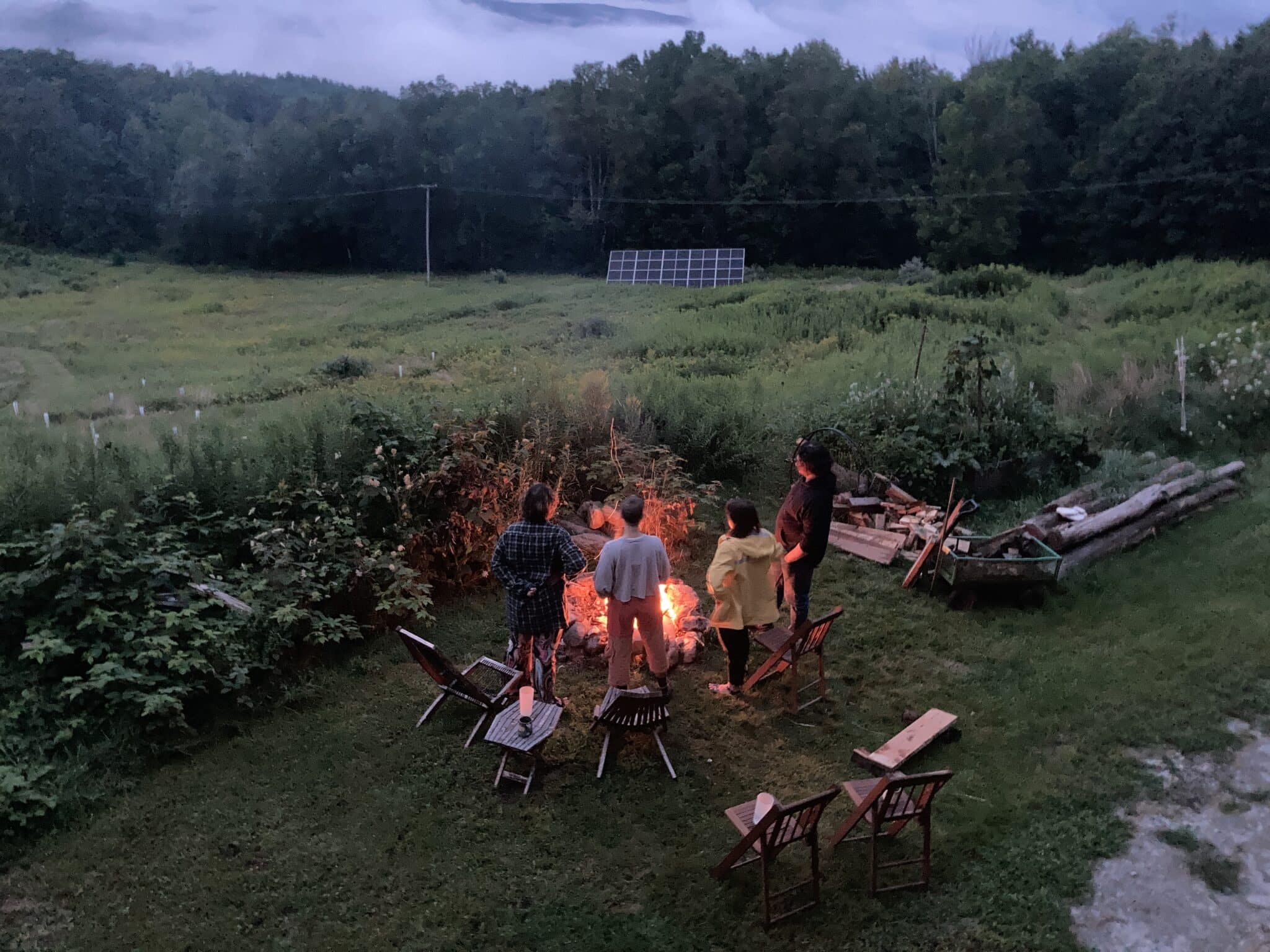Our residency ethos goes beyond simply studios as fertile creative spaces. We are interested in what nourishes us, and how; Art, Food, and Community.
Sharing meals together is one of the informal and very essential ways that we create polyculture— ISPC programming is usually self-catering and folks can expect to be self-responsible for their food and meals, however we do often make communal welcome meals and co-create food together throughout the course of a program. Some of the food will be grown on-site in our soon-to-be-planted art barnyard gardens, but most of what we stock and serve here is cultivated by neighboring homesteads, small farms, and ethical foragers in our region.
We are committed to the material reality of our campus and our studio practices. Material knowledge, ancestral practices, re-skilling artists and people’s hands is an essential task.
The commons on Hartley Hill are approximately 9 acres of meadow and steep incline woodland with some trails adjacent to large stretches of undeveloped woodland; a mixture of hardwoods like ironwood and maple, hemlocks and evergreens. Like much of New England, the forest is recovering from clearcutting and heavy grazing in the 19th century, and is second generation growth for the most part.
We are cultivating multiple groves of perennial fruit and nut trees and shrubs, as well as diverse beds and swaths of perennial native wildflowers and edible and medicinal herbs. We have planted blueberries, raspberries, russet apples and pears, mulberries, hazelnuts, butternuts, chestnuts and pawpaws thriving amongst the goldenrod, asters and milkweed. We aren’t expert gardeners or horticulturalists yet, but we are learning to steward a nourishing and diverse array of plants, both cultivated, domestic food varieties and indigenous plants will help to feed us, our residents, our neighbors, and also especially our non-human neighbors; we see porcupines, deer, chipmunks, foxes, fishers, possums, monarch butterflies, skunks, barred owls, hawks, finches, bluebirds and occasionally a bear!
Goldenrod ink, mushroom spore printmaking, dogbane fiber, knotweed paper, garden tomatoes and maple syrup are all examples of materials that we have cultivated, foraged / harvested, processed and used at In Situ Polyculture.

